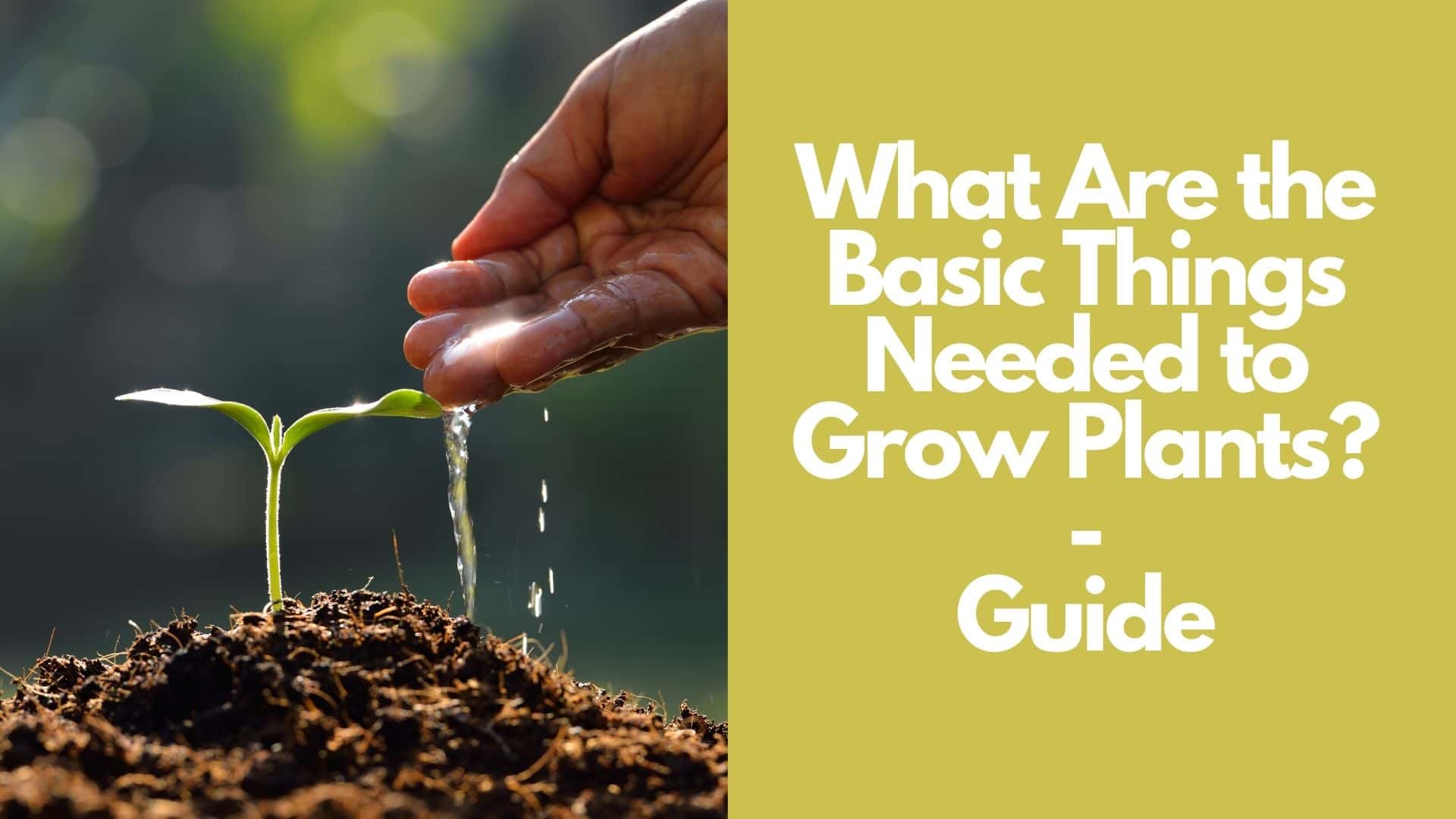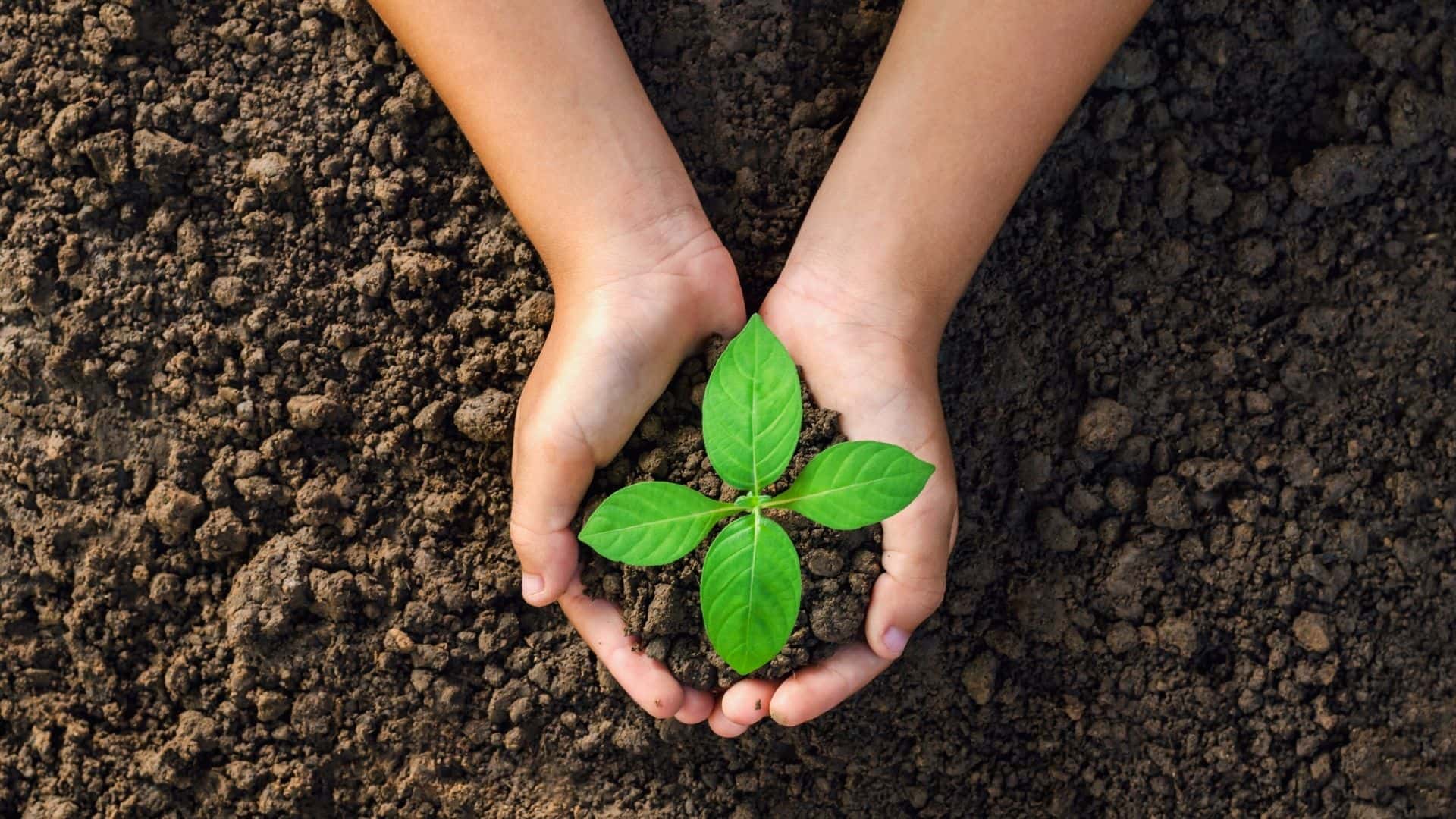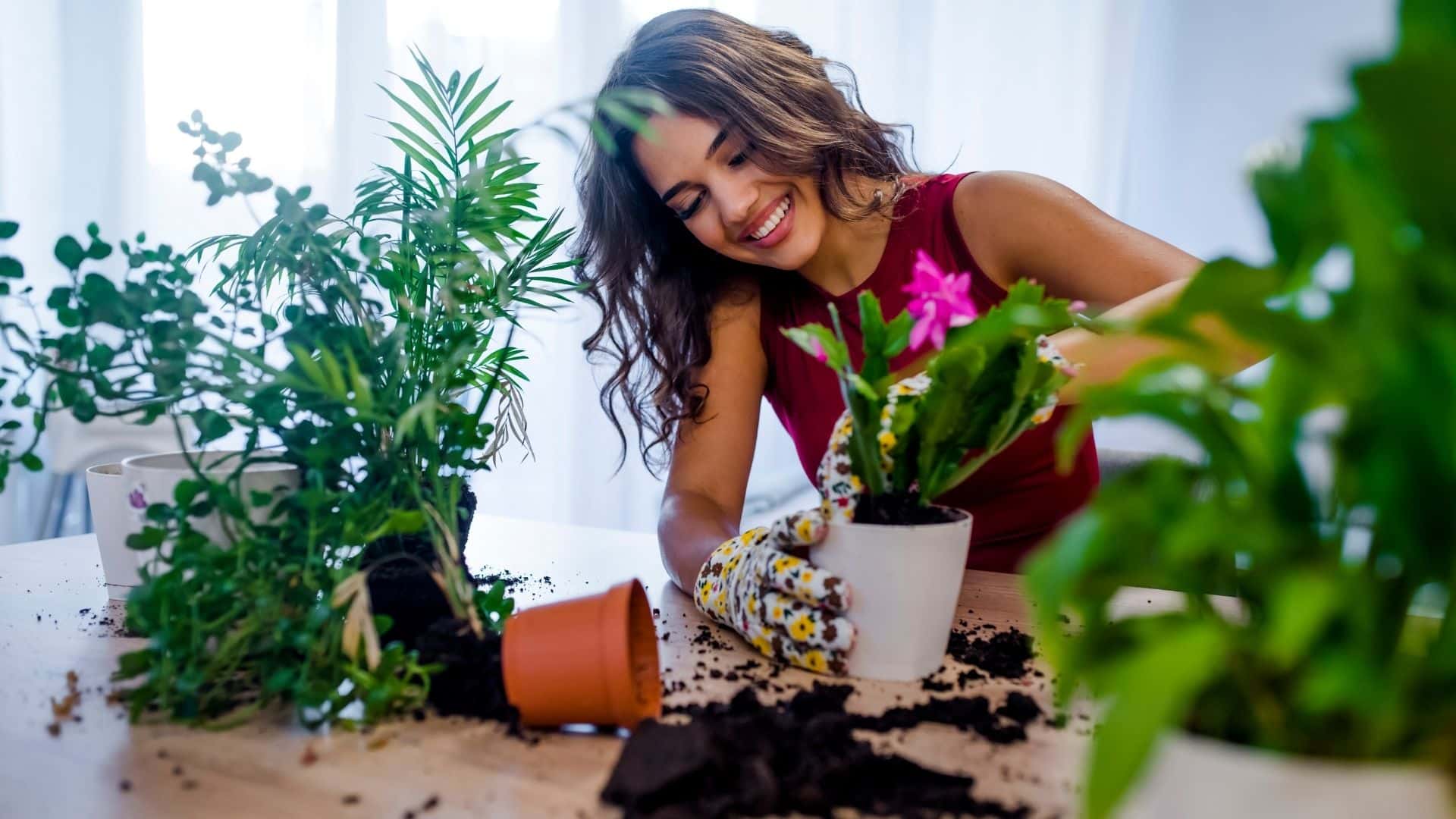Plants are recognized as the main living component that contributes much for the proper existence and security of environment. Every plant has its specific requirements to grow and survive. These needs can be vary from plant to plant according to the nature of plant. But every plant requires common things to grow and survive. By reading this guide, you will be able to know, What Are the Basic Things Needed to Grow Plants?.
They are,
- Sunlight
- Water
- Air
- Temperature
- Space
- Time
- Nutrients
- Good Care
All these needs go together because all are important plant to keep alive.

Let’s start,
1. Sunlight
The plants can get light from sun but they can also grow using artificial light. When sun shines on the plant, the plant absorbing the sunlight. Plants require light to perform photosynthesis. Photosynthesis is the biological process of producing food in chlorophyll containing cells using carbon dioxide, water by absorbing energy from sunlight. Light energy is an important factor of photosynthesis. There are two products produced by photosynthesis such as glucose and oxygen.
The amount of sunlight a plant receives is vital for its growth rate. Light duration affects germination. Seeds may start to grow without light whereas sunlight is an essential factor for the plants to grow. Green house growers direct light duration to stimulate flowering in blooming plants. Blue light encourages to vegetable growth and both of blue and red light encourage flowering.
In some plants flowers bloom only when there is sunlight, they open offer sunlight and close of sunset as well as in some plants leaves open when there is sunlight and fold at night.
Sunlight impacts the growth of plant in short term or long term. If there is not enough light in a day, the plant may grow slowly and cannot produce sufficient food to remain healthy. However, over lightning can be harmful to growth of plant because it may also die the plant. Different plants need different amount of light. Outdoor plants can receive sunlight very well whereas indoor plants should treat well using light. Changes in sunlight may cause to health of plant. For plants to be healthy, they require sufficient sunlight.
How much sunlight does a plant need?
The amount of sunlight required for plants to grow varies. There are 3 basics of lightning levels that the various plants prefer. Full sun, partial sun or shade and full shade are them.
- Full sun – Plants need direct sunlight for 6 or more hours daily to grow.
- Partial sun / Partial shade – Plants need direct sunlight for 4 to 6 hours daily to grow.
- Full shade – Plants need sunlight for less than 4 hours daily to grow.
2. Water
Water can be considered as an essential factor for the survival of life not only humans but also plants because plants cannot also live without water so that watering is very important factor of plant care. More than 90% of plants is made up of water.
Plants need water to absorb the nutrients and minerals from the soil so these nutrients absorb through roots and then transport these throughout the every part of plant’s body. If plants not access enough water, they will not absorb the nutrients. When we water the plant near its roots then roots absorb the nutrients from soil and distribute upper parts of the plant.
Plants also need water to process photosynthesis. Water has an important role in helping plants stay upright. Water helps to maintain temperature of plant as well as keeping plant cool and it evaporates from the leaves. It also helps to enlarge the cell that’s why cell division which increase the growth of plant. Water plays a vital role in flowering and also fruiting. However, lack of watering and over watering can be harmful to the growth and survival of plant.
What is the best part to water the plant?
The great place to water is root area around the plant. The roots absorb water from the soil and transport throughout the plant. Not only that, when the soil is moist the plant can easily absorb required nutrients.
If watering to the leaves and stem of the plant, it will evaporate quickly. There can be possible to occur some fungal infections and other diseases. So watering to root zone is best to keep the plant healthy.
What happen if the plants grow without water?
You already know that water is very useful to plants. This is because water performs various main functions to grow plants healthy and successfully. It plays a major role in photosynthesis, transpiration and germination of seeds.
Without water, none of these works will process. The soil can dry out so that the plants unable to absorb appropriate nutrients from the soil. When the plants lose the water and other nutrients it needs, the plants become leggy and wither. They have no energy to grow well. Then it can’t stand up straight and dies over time.
3. Air
Plants breathe carbon dioxide from surrounding air and release oxygen. In order to perform photosynthesis well, the plant need carbon dioxide. The plant cannot be able to create glucose without air. Plants need oxygen to survive and plant cells are continuously using oxygen. Although air helps to transfer of heat from leaf surfaces quickly, that causes to spread fungal growth in the plant.
However, air can be polluted why smoking, transportation, industrial emission and wildfires etc. that could be cause to damage the plant because plant is absorbed carbon dioxide by atmosphere. When air is not available properly, the roots may weaken. Then the water, nutrients and minerals cannot transfer well throughout the body of plant.

4. Temperature
Temperature is one of the basic need that is very important to growth of the plants. Plant temperature, air temperature and soil temperature may be different from each other. The plants mostly like normal temperature and it differ depending on the species. They are able to adapt to the various temperature levels. There are 3 levels of temperature such as minimal, optimal and maximum level.
Temperature influences in various ways in photosynthesis, transpiration, respiration, germination and yield etc. It affects to determine the speed of these functions. Before planting, be aware of how much heat your plants need that helps to reach successful level as soon as possible. It is very useful to get a very high quality yield as you want.
How to affect temperature to seed germination?
Temperature is a factor in determining the germination of seeds. The speed of germination can be vary due to the temperature levels. The optimal temperature is around the 70F⁰ that the most of seeds prefer to germinate quickly. When the soil temperature is low or high, the seeds may take time to germinate or no germinate. Therefore, it is best to start seeds indoors instead of sowing seeds directly to the ground. Then right temperature can be achieved.
How to affect temperature to photosynthesis?
Photosynthesis is also affected by the one of factor is temperature. This is performed differently by various species of plants. Hence the optimal level may be also vary to process photosynthesis well. Most of plants prefer to moderate temperature do best that the level is between 50 to 69F⁰. The plants do not well in low and high temperature levels.
5. Space
Plants require space to grow properly. The space should be selected for a plant depend on the nature of it. Roots of the plants need sufficient space to grow well. If not having a suitable space to grow plant, the plant can damage.
You should plant considering how high the plant will grow in somewhere. It is important to select a certain space where water can absorb well to the roots and receive good light.
What happen if there is not enough space to grow plants?
Growing plants close together does not produce successful results. Plants need enough space to grow because roots require to spread well. Then the plant can reach its maximum and successful level. But if not have enough space, there may be competition between plants. They compete to absorb the nutrition they need and they do not get enough fresh air. It can also cause various diseases. The plants become weak and appear tall and leggy looking plants. So enough space is essential to grow plants healthy.
6. Time
Maturation is not an easy process from germination. So that the plants need time. The plants grow by absorbing water and nutrients from the soil and adapting to other environmental conditions.
They need time to transport the nutrients gradually for every parts of the plant. The time that takes to absorb them well and flowering and fruiting can vary from plant to plant. Some produces their yield in short time whereas some produces in long time.
7. Nutrients
Nutrients play a vital role in plant growth and survival. Plants require nutrients to protect themselves from such problems. Nutrients are usually existed in the soil and these nutrients are absorbed by roots of the plant and transport upper parts of the body.
However, we can add extra fertilizers to give sufficient nutrients to the plant and that help to plant grow healthily. The essential nutrients can be recognized as Nitrogen, Phosphorous and Potassium. Calcium, Magnesium, Sulphur, Iron, Boron, Copper, Zinc are also nutrients which helped to the growth and survival of the plant.
Why Nitrogen and Phosphorus are important to plants?
Nitrogen is an essential part of cell division. It helps making the green leaves and encourages vegetable growth. It is an essential constituent of protein. Nitrogen affects energy reactions in the plant. Phosphorus is involved with photosynthesis, respiration, cell division and enlargement. It helps to increase disease resistances. It also governs the root growth and strengthen and functions as energy storage.
Phosphorus is an essential of reproductive functions and it assists to improve the quality of vegetables, fruits and flowers. Potassium helps to increase photosynthesis, water use efficiency and improve the quality of seeds and fruits. It is very useful for fighting with diseases and it is an essential to protein synthesis.
Calcium, Magnesium and Sulphur are also nutrients. Plants also need these nutrients but not need high. Calcium use for continuous cell division and formation and help to reduce plant respiration. One of key element of chlorophyll production is magnesium which also increase iron utilization in plants. This also helps to carry phosphorus. Sulphur assists to seed production and develop enzymes and vitamins.
The plant can also get sufficient nutrients using even a small amount of Iron, Zinc, Boron and Copper and other nutrients. There should not be used too much extra nutrients for the plant that can be harmful to the plant so that use sufficient nutrients for plants according to the plant size, nature of the plant etc.
8. Good Care
The plants should be well cared because it is important to be aware about watering, lightning and soil requirements etc. The environmental conditions are not always in a stable position. Check the plants daily. Some plants need support to thrive so keep in mind to provide a stake or trellises in such a case that help to tie the plant well.
Diseases can be occurred to the plants over time. Hence it is important to check the plants daily and if the plants are infected, be sure to treat them as soon as you see them. With such a good care, you can receive successful results from your plants.
Watch Are there any plants, that can grow without sunlight? | Video
Top 5 FAQs & answers related to what are the basic things needed to grow plants?
How to provide light for indoor gardening?
You can provide adequate sunlight by placing the plant near a window. The artificial lights can also use to provide lights to plant to thrive. The amount of lightning that need to plants can vary. So pay attention to that.
Which plants are well suited to morning sunlight and evening sunlight?
Morning sunlight is actually good for plants that provides Vitamin D. It is less intense and somewhat filtered so that morning sun is good for the plants that prefer to partial sun or partial shade to thrive. Evening sun is more heat than morning sun and it is strong. Evening sun is good for the plants that prefer to thrive in full sun or partial sun.
How to identify fertile soil?
Fertile soil is rich in nutrients and usually dark in color. Earthworms can be seen there. If you are not sure, you can also do a soil test. Really fertile soil is great to successful and healthy plants.
How much water should provide for the growth of plants?
This really varies due to variety of reasons. Factors such as the nature of the plant, weather conditions, soil quality and its location are also affected. Therefore, it is important to consider for all these factors while watering. Generally, plants growing in warmer climates need more water than cooler climates. Most of plants prefer moist soil to thrive. Plant size is also determined how much water your plants. However, too much watering cause to root rot whereas lack of watering cause to grow leggy plants.
How do know when plant is established?
Plants take time to establish because they get required nutrients from the soil. A new growth can be seen when providing all basic needs well to plant growth. Then the plant is well fit to the soil. It is somewhat difficult to remove from soil.
Conclusion
By reading this guide, I hope you got the full idea of What Are the 5 Basic Things Needed to Grow Plants?.
Please share this What Are the 5 Basic Things Needed to Grow Plants? | Guide with your friends and do a comment below about your feedback.
We will meet you on next article.
Until you can read, Top 10 Easiest Houseplants to Grow
